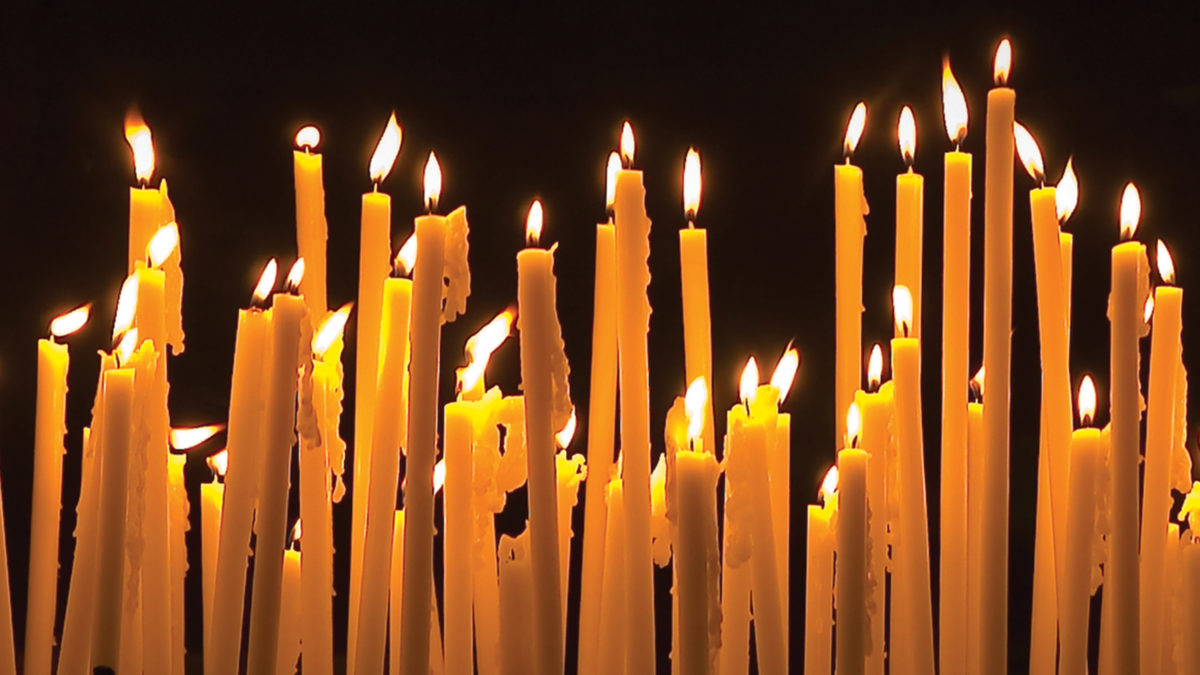
Flight from the Williamites
October 2021
Download This Article (.pdf)
For thousands of years, religious groups have survived by having members live together, pool their resources, and “hold all things in common.”1 But what happens when a member decides to leave the group, asks for his or her money or property back, and is refused? The Colorado Supreme Court addressed this question in a 1909 case involving a woman who claimed she was conned out of her worldly possessions by a cult led by Henry Truman Williams.
From Gardening Guru to Cult Leader
Those who knew him in the 1870s might have had a hard time envisioning Williams in his later role as the leader of a religious cult in the Colorado hinterlands. During the seventies, he worked as a travel agent for several Western railroads, was agricultural editor for the New York Independent, and edited Horticulturist magazine.2 He also published a number of domestic guides with titles like “Ladies’ Fancy Work: Hints and Helps to Home Taste and Recreations,” and “Beautiful Homes: or, Hints in House Furnishing,” along with a book on window gardening and a guide on “How to Destroy Insects on House-Plants, Flowers, etc.: in the Window, the Garden, the House.”3 His best-known book seems to have been a travel guide called The Pacific Tourist, published in 1876. Of his publications in the 1870s, only a book on occultism he published in 1878, titled The Secret Book of the Black Arts, gave a hint of his more esoteric interests, and perhaps of the darker things to come.4
By 1879, Williams had become the leader of a cult headquartered in New York whose members became known as “Williamites.”5 This group eventually adopted a set of beliefs and practices that have become all too familiar in cults of its type. They practiced faith healing and shunned modern medicine. Its members, who were considered part of a single family, were told that to be healed of their diseases they must donate themselves and all their worldly possessions to God and submit unquestionably to orders from the group’s leadership. As a practical matter, this meant giving all their possessions to the group.
Food, clothing, and supplies were purchased for group members from the common fund as needed. Members were also required to practice celibacy. But it was rumored that Williams himself was not subject to this restriction, and he was the only male cultist permitted to make visits to the female quarters of the cult facility. Allegedly, some women in the group became pregnant, which raised suspicions about Williams’s character.
From New York, the cult relocated to Chicago, where they were raided by police. The Williamites had taken in orphan children, and there were rumors these children had been abused and some of them had died. After authorities seized several of the children, the cultists moved on to Denver, only to find that the Humane Society of Chicago (which in those days protected abused children as well as animals) had notified the Denver authorities of their concerns. After that, the group continued migrating to increasingly more isolated Colorado locations: first to Colorado City, and then to Edlowe (now a ghost town in Teller County), where they established a camp for “wayward youths.”6
But even in these more isolated locations the Williamites continued to stir up controversy, as locals attempted to liberate their relatives from its control. In 1889, a couple applied to the local humane society to have their two teenaged orphan sisters removed from Williams’s custody.7 The humane society investigated and found that Williams had neglected the girls “morally, mentally, and physically.”8 Testimony at a subsequent hearing focused on the Williamites’ unusual beliefs and practices. It appears the girls ultimately were removed from Williams’s custody.
Ms. Beishline’s Suit
One of the disaffected adult ex-members of the Williamite cult was a woman named R. A. Beishline. At the age of 45, and “afflicted with a grievous malady,”9 she voluntarily joined the group. She did not enter it blindly; before becoming a group member she had numerous interviews with its local manager, the result being that “she became a believer in the sect and especially in divine healing and had implicit confidence in its officers.”10
When she entered the group by moving into a communal home, she gave them some of her property in anticipation of a cure. But she did not get better. The home’s manager told her this was because “her consecration had not been complete and perfect.”11 At this prompting, she gave the group her remaining property. Yet her condition persisted.
After staying in the group home for two years, Beishline became disaffected with the Williamites. She had not been cured, and she observed her property had not been “consecrated to the Lord,” as promised, “but was diverted from that purpose . . . and held under claim of private ownership by the head of the order for his own sole use and benefit.”12 Beishline left the group and demanded her property back. After her demands were refused, she sued. Following a jury trial in county court, she obtained a judgment against the local manager of one of the Williamite homes, whom the parties treated as the sect’s authorized representative.
The Appeal
On appeal, the Williamites argued that Beishline had voluntarily gifted her property to the group, in compensation for which the Williamites had provided her with “the comfort and privileges of the common home.”13 By contrast, Beishline contended that the group had knowingly defrauded her of her property by falsely claiming they could cure her of her disease and that her property would be consecrated to the Lord. She claimed, “this entire scheme of so-called consecration was but a subterfuge or artifice practiced upon her, a devout believer, to enable the head of the order to get title in his own name and possession of all her property.”14
The Colorado Supreme Court first considered the group’s challenge to the evidence admitted against it. Courts are understandably reluctant to inquire into the relative sincerity of the parties’ religious beliefs in a case of this type, and it appears the Supreme Court was concerned that the county court had gone too far in that direction. It stated that the county court “should not have permitted so wide a latitude to plaintiff in introducing evidence as to the religious beliefs and doctrines and practices of the alleged religious order.”15 But it concluded that the court had cured the error by limiting the purpose and amount of evidence on this point and by “its final instruction to the jury not to consider the religious doctrines of the order in determining the conflicting property rights.”16
After rejecting an additional challenge to the jury instructions, the Court turned to the main issue on appeal: sufficiency of the evidence. The group claimed that Beishline relied on only their breach of future promises that she would be healed, so she was not entitled to the return of her property. But the Court held there was plenty of evidence to show past or present instances of fraud. Beishline’s testimony showed that “when she was greatly distressed in mind as a result of her grievous disease,” the group’s officers
practiced upon her . . . gross fraud with respect to their existing power or ability, residing either in themselves of subject and responsive to their call from the Almighty, to cure her of the disease, and by such fraud they induced her to put her property into their possession with the understanding on her part that it was being consecrated to the Lord; whereas, as she claims, their entire efforts and conduct were nothing more than a fraudulent scheme practiced upon her to enable the head of the order to get title to her property for his sole use and benefit, instead of devoting it to the use to which she supposed she was consecrating it.”17
The Court upheld the jury’s verdict, because Beishline “parted with . . . possession [of her property] without a good or valuable consideration, but as a result of flagrant fraud practiced upon her.18
Aftermath
The Colorado Supreme Court’s reasoning in Mahler v. Beishline leaves open some interesting questions: Would Beishline have sufficiently shown fraud to get her property back if she had received the healing she sought but remained disillusioned because the group’s officers were using her property for their own benefit rather than consecrating it to the Lord? Or suppose that she had not been cured, but the group had used her property strictly as it had promised, for disinterested religious purposes? In both scenarios, the answer seems unclear; all we can say is that the combination of broken promises to heal Beishline’s illness and the group’s misuse of her funds was sufficient to support the jury’s verdict in her favor.
After their misadventures in Colorado, the Williamites finally relocated, yet again, to Arkansas. Williams died in 1915. After that, the group faded into history. 
Notes
1. Acts 4:32 (“And the multitude of them that believed were of one heart and of one soul: neither said any of them that ought of the things which he possessed was his own; but they had all things in common.”).
2. See Collins, Lost Ghost Towns of Teller County 53 (The History Press 2016).
3. For a comprehensive list of Williams’s publications, see http://onlinebooks.library.upenn.edu/webbin/book/lookupname?key=Williams%2C%20Henry%20T%2E.
4. See id.
5. See Collins, supra note 2 at 53.
6. See id.
7. See “A Queer Community,” Aspen Daily Chronicle at p. 1 col. 3 (Dec. 19, 1889).
8. Id.
9. Mahler v. Beishline, 105 P. 874, 875 (Colo. 1909).
10. Id.
11. Id.
12. Id.
13. Id.
14. Id.
15. Id. at 876.
16. Id.
17. Id.
18. Id.
After staying in the group home for two years, Beishline became disaffected with the Williamites. She had not been cured, and she observed her property had not been “consecrated to the Lord,” as promised, “but was diverted from that purpose . . . and held under claim of private ownership by the head of the order for his own sole use and benefit.”


